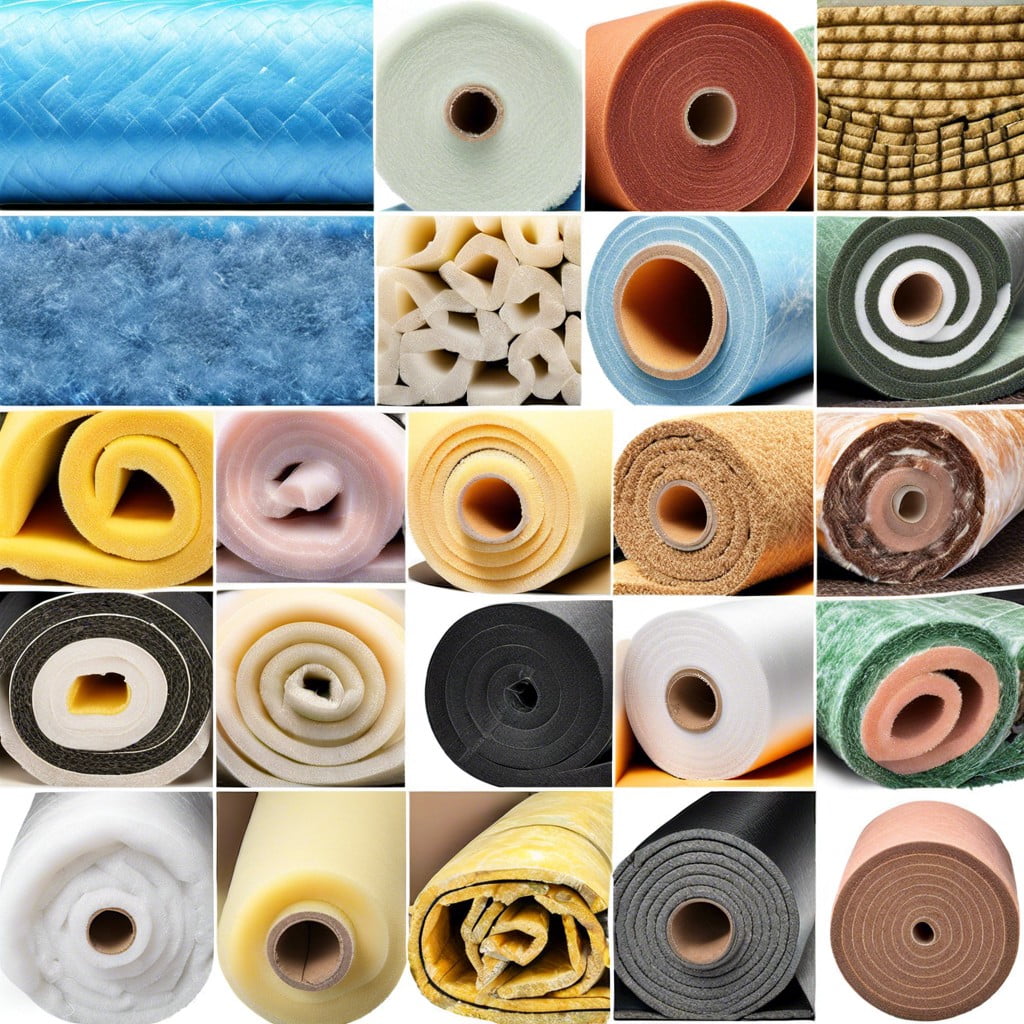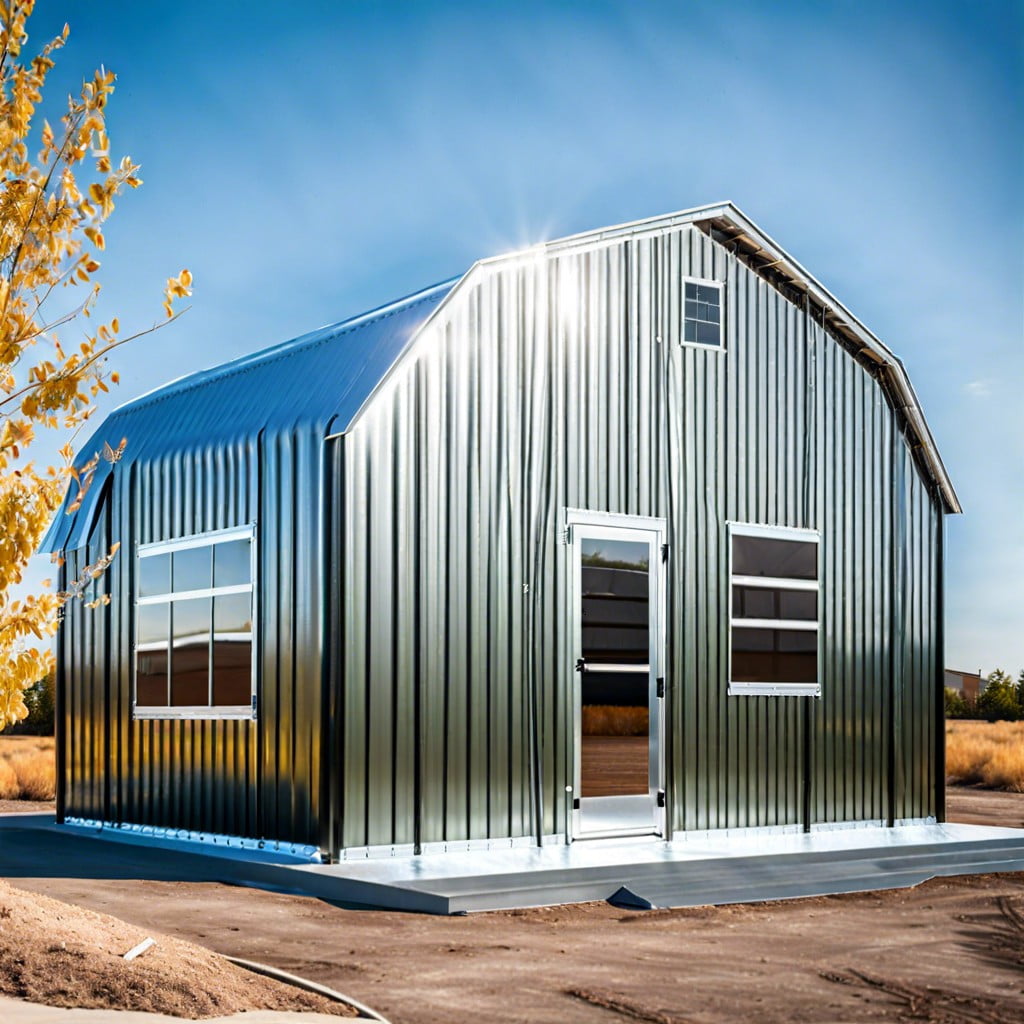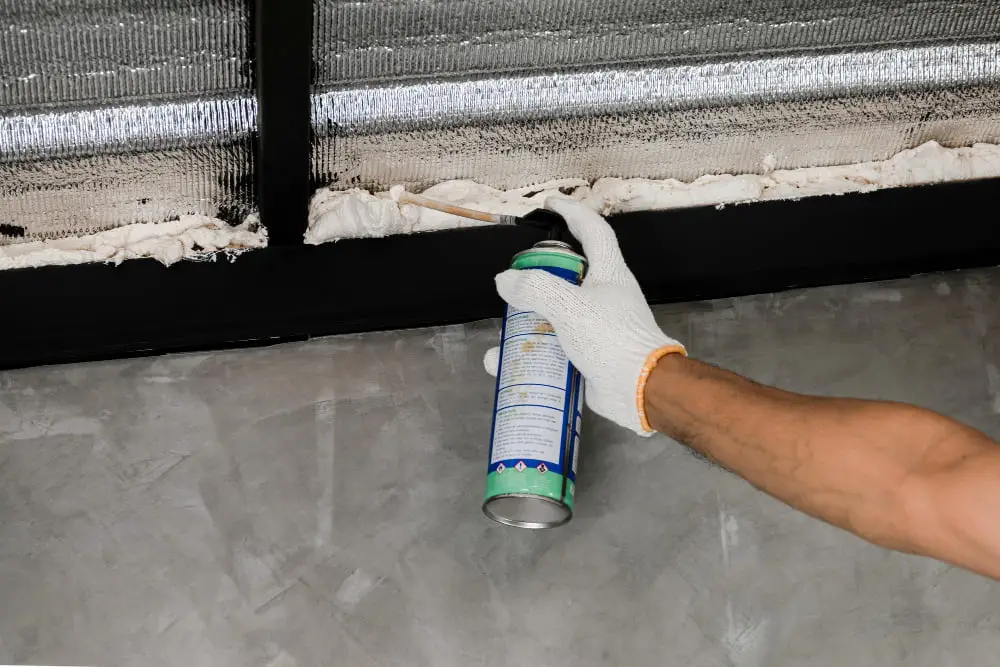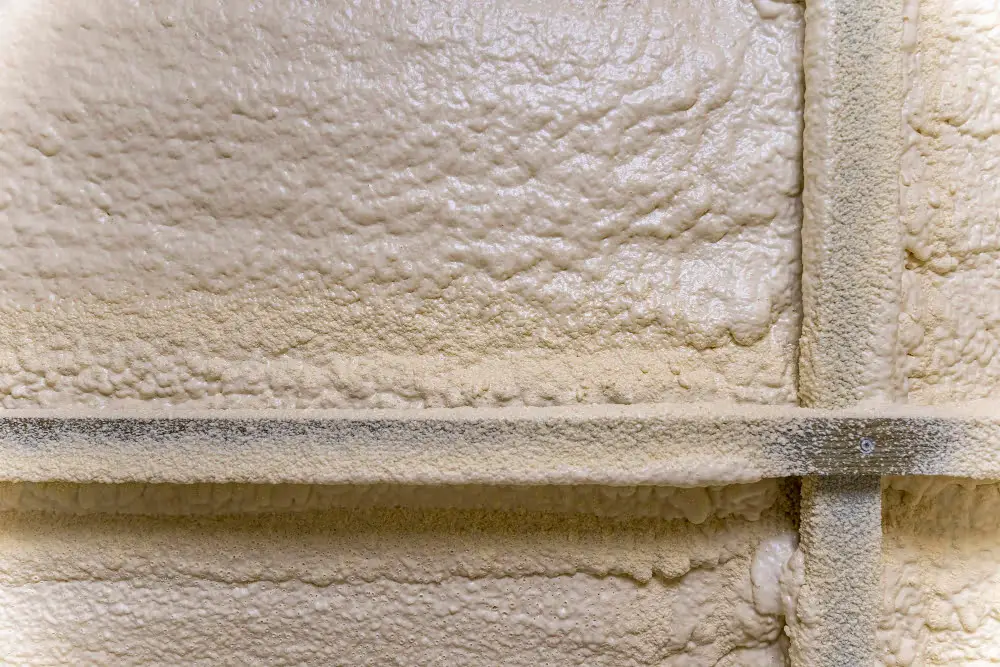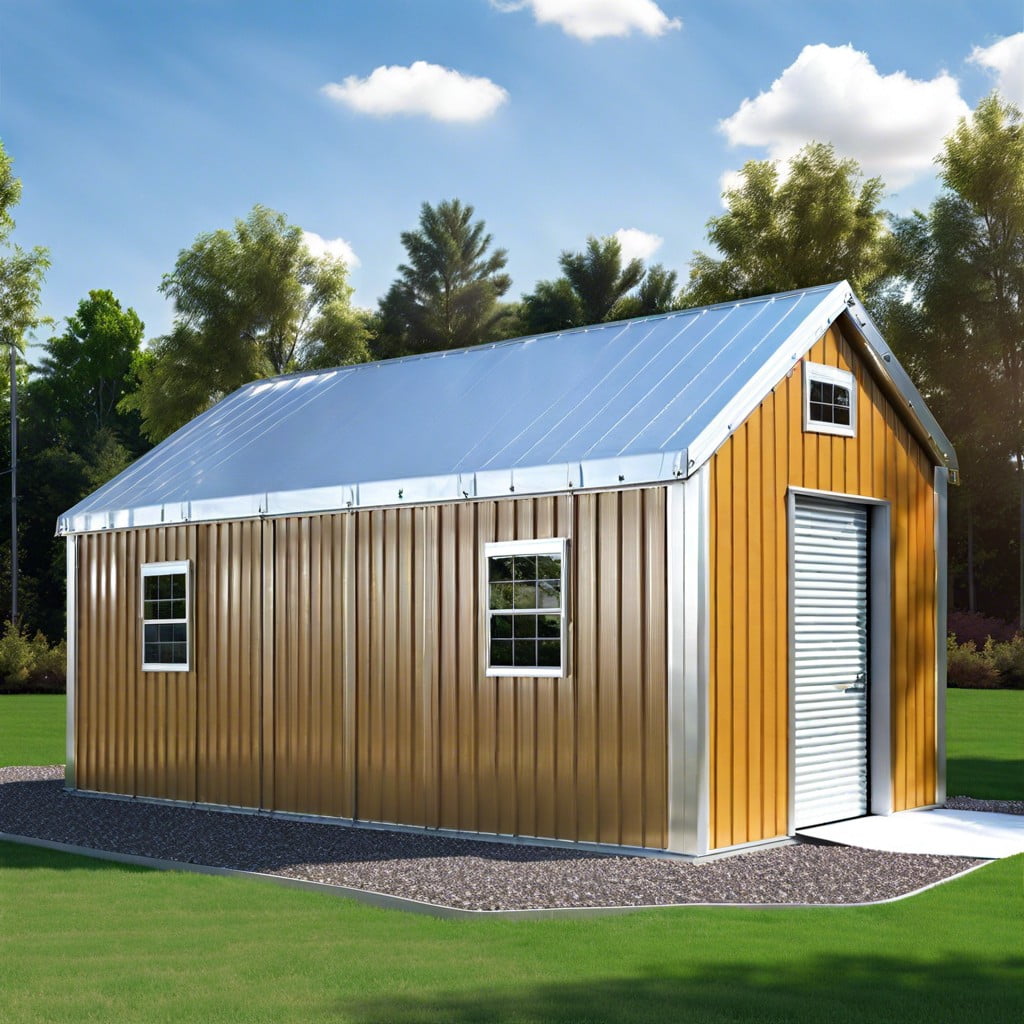Discover the effective ways to insulate a metal building, enhancing its energy efficiency and comfort levels.
Insulating a metal building effectively requires a keen understanding of insulation materials and techniques. This article provides a comprehensive guide on how to insulate your metal building to enhance its energy efficiency, reduce condensation, and improve its overall comfort level.
From selecting the right insulation material, like fiberglass, spray foam, or reflective foil, to understanding the importance of a proper installation process, we’ve got you covered.
So, whether you’re looking to insulate a metal garage, a steel barn, or a large commercial building, this guide will equip you with all the knowledge you need to get the job done.
Key takeaways:
- Metal building insulation provides thermal control and energy efficiency
- Insulation also reduces sound transmission and controls condensation
- Proper insulation increases the lifespan of the building
- Consider climate, building use, and local codes when selecting insulation
- Fiberglass, spray foam, and reflective foil are common insulation materials
Why Insulate a Metal Building?
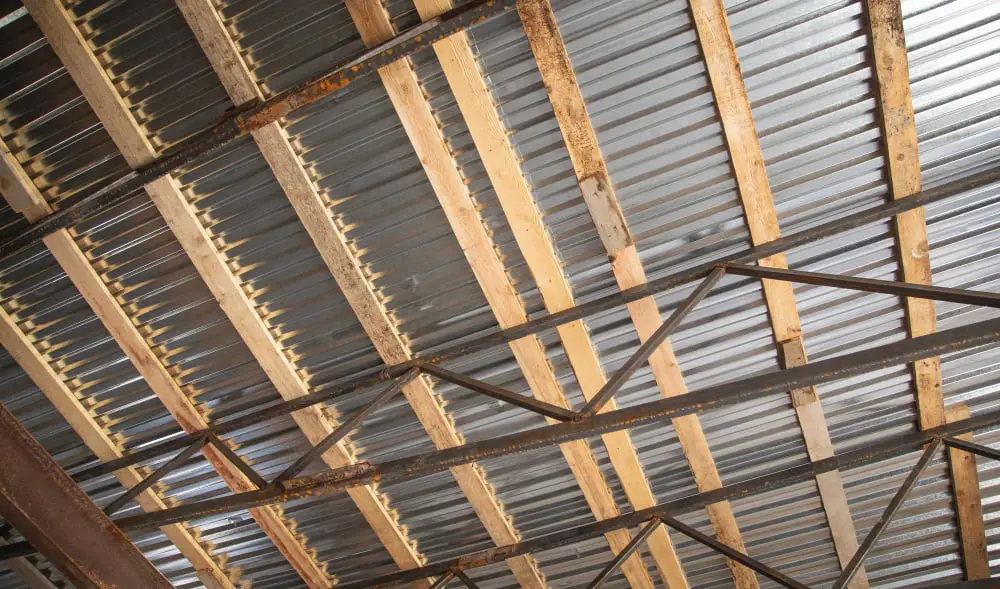
Insulating a metal building can provide significant advantages, including thermal control, increased energy efficiency, and sound reduction, among others.
1. Thermal Control: Metal building insulation helps in maintaining a consistent indoor air temperature by reducing the rate of heat transfer. In summers, it reduces the amount of heat that enters the building, while in winters, it helps to retain warmth inside.
2. Energy Efficiency: Efficient insulation can significantly decrease the energy needed for heating or cooling the building, resulting in lower utility bills.
3. Sound Reduction: Besides thermal benefits, insulation can also provide acoustic dampening. It helps to reduce the transmission of exterior noise into the building and vice versa.
4. Condensation Control: Metal buildings can be prone to condensation which may lead to potential damage. Proper insulation helps prevent condensation by creating a vapour barrier.
5. Increases Lifespan of Building: By maintaining temperature stability and reducing condensation, insulation can enhance the longevity of your building.
Remember, the better insulated the building is, the more comfort it will provide, making the living or working environment more pleasant and potentially increasing productivity. Proper insulation encourages sustainability and cost-effectiveness, making it a wise investment.
Benefits of Insulating Your Metal Building
Insulating your metal building holds a multitude of benefits. Energy efficiency tops the list, as insulation significantly reduces the amount of heat entering or leaving the building, thus lowering the energy costs for cooling and heating. Furthermore, it makes the indoor environment more comfortable by maintaining a stable temperature and reducing noise transmission.
You’ll also appreciate the condensation control. Metal buildings are prone to condensation, which can lead to harmful mold and mildew. Insulation acts as a barrier, minimizing this risk. Finally, proper insulation bolsters the fire safety of your metal building due to the fire-resistant properties of most insulating materials. Remember, these are not merely short term benefits; insulation prolongs your building’s lifespan by lowering maintenance needs and preventing potential damage from moisture and temperature fluctuations.
Understanding Metal Building Insulation

Insulation serves a crucial role in controlling the internal temperature of a metal construction. It helps keep the interior cool on scorching summer days and warm during frigid winter times. Insulation acts as a barrier to heat flow, resisting the transfer and reducing the amount of energy required to heat or cool a building.
In essence, metal building insulation is made from materials that slow the conduction of heat. These materials include fiberglass, cellulose, and foam, among others. They trap tiny pockets of air or other gases, which slows down the rate at which heat is transferred.
Additionally, it’s crucial to note that insulation is available in several forms such as batts, rolls, loose-fill, rigid boards, and spray foam. Each serves a specific purpose and has a unique installation process. For instance, spray foam, when applied, expands to fill all available gaps, creating an airtight thermal envelope, while batts and rolls are better suited for unobstructed spaces like wall cavities.
Lastly, the efficacy of insulation is measured using three significant metrics: R-Value, U-Value, and Perm Ratings. These metrics define the product’s resistance to heat flow, the rate at which the product conducts non-solar heat, and the product’s ability to allow moisture to pass, respectively. Ensuring a grasp of these factors can assist in making an informed choice.
In the coming sections, we’ll delve deeper into these insulation types and their best suited applications for metal buildings. Remember, the primary objective is to create a more energy-efficient space that offers comfort regardless of the season.
Factors to Consider for Metal Building Insulation
When planning the insulation for your metal structure, several key factors should be addressed.
1. Climate: A building’s location can greatly impact insulation needs. Warmer climates benefit from insulation that effectively blocks heat gain, while colder ones require insulation that focuses on heat retention.
2. Building Use: The function of the building also influences insulation choice. A structure housing livestock, for example, might need a different insulating material compared to a building used for storing items that are sensitive to extreme temperatures.
3. Existing Insulation: Examine the current insulation, if any, for areas that call for potential upgrades or changes.
4. Local Building Codes: These regulations often stipulate specific requirements that must be adhered to, including factors such as R-value, which measures insulation performance.
5. Energy Goals: Aim to have an insulation system that reduces energy usage and saves on heating and cooling costs.
6. Budget: While cost should not be the only determinant for choosing insulation, it’s crucial to strike a balance between financial realities and insulation requirements.
7. Building Structure and Design: The physical configuration of your building might affect the type of insulation material or method you choose.
This comprehensive understanding of your building’s specification can help lead to optimal insulation choices that meet the unique requirements of your structure.
What Are R-Value, U-Value, and Perm Ratings for Insulation?
When considering insulation options, three pivotal metrics to grasp are R-value, U-value, and Perm rating.
R-value represents the thermal resistance of insulation, indicating how well it holds back heat. A higher R-value signifies a greater resistance to heat flow, providing a more efficient form of insulation.
U-value, on the other hand, measures the heat transmission rate through a material. In contrast to R-value, a lower U-value indicates superior insulation properties, as less heat is lost.
Perm rating, or permeance, gauges the capability of a material to allow moisture to pass through it. For metal buildings, selecting insulation with a lower perm rating is crucial to prevent possible harm from moisture and condensation.
Considering these parameters while deciding on insulation can help identify the right product, aligning with your building’s needs and climatic conditions.
Types of Metal Building Wall Insulation
For walls, there are four main types of insulation you can consider: Fiberglass, Rigid Board, Insulated Metal Panels, and Spray Foam.
Fiberglass is a classic choice, known for its affordability and easy installation. It comes in batts or rolls and is typically faced to function as a moisture barrier.
Rigid Board insulation, made from polystyrene, polyisocyanurate, or polyurethane, offers a higher R-value than fiberglass. It works well for buildings needing temperature control, making it an ideal choice for cold-storage facilities.
Insulated Metal Panels combine insulation and metal cladding into a single product. These high-performance panels offer superior thermal efficiency, fulfilling both structural and thermal requirements.
Spray Foam insulation, both open-cell and closed-cell versions, provides a high R-value with great sealing properties. It can fill gaps and spaces that traditional insulation might miss, keeping the structure tightly sealed.
When choosing, evaluate based on the needs of your metal building project, considering factors such as thermal performance, local building regulations, budget, and intended use of the building.
Fiberglass Solutions for Metal Buildings
Fiberglass insulation is a common choice for metal buildings. This option has high thermal performance, improving energy efficiency. It is essential to ensure correct installation to minimize gaps and prevent thermal bridging.
Fiberglass typically comes in two forms. The first is blanket insulation, which is often covered by a vapor retarder or facing material. This material is generally placed between the girts and purlins during construction.
The second is fluffy insulation or loose-fill, which is densely packed into walls and attic spaces. This option provides excellent sound damping and performance in colder climates.
Note that fiberglass is non-corrosive and will not support fungal or mold growth. It is also naturally fire retardant. These properties add to the safety of your building. Despite these benefits, it’s crucial to handle fiberglass insulation with appropriate safety measures to prevent irritation.
Rigid Board Insulation for Metal Buildings
One highly efficient option is rigid board insulation. Often made from polyurethane, polystyrene, or polyisocyanurate, it’s known for its high R-values, signifying superior thermal resistance. Able to be used for any part of the building, it’s a versatile choice, especially effective for thin walls.
Particularly appealing with this insulation is its water and moisture resistance. In metal buildings, these properties protect against mold growth and deterioration. Care should be taken during installation to avoid gaps, which compromise the insulation’s effectiveness.
The rigidity of these boards also adds structural strength, providing a dual purpose. However, it’s worth noting that they’re not fire-resistant and may produce toxic fumes when heated. To mitigate this, boards typically come with flame-resistant treatments.
Rigid board insulation may require an initial investment, but with high R-values and added structural benefits, it can prove to be a cost-effective solution in the long run.
Insulated Metal Panels for Walls
Insulated metal panels (IMPs) offer both insulation and exterior coverage in a single product, making it a popular choice for a variety of metal buildings, ranging from warehouses to commercial structures. Each panel is composed of a layer of insulation, such as polyurethane or mineral wool, sandwiched between two metal sheets.
The panels boast an array of benefits due to their unique construction:
- Energy Efficiency: They provide high thermal efficiency and airtightness, reducing energy consumption and increasing comfort within the building.
- Ease of Installation: IMPs can be directly fixed to the building structure, which simplifies and speeds up the construction schedule.
- Structural Integrity: The panels add extra strength and resilience to the building.
- Design Flexibility: They come in different sizes, thicknesses, and finishes, allowing for wider design possibilities.
Even though IMPs often have a higher initial cost than other insulation methods, their longevity and energy-saving potentials often make them a cost-effective solution in the long run. Maintenance is also streamlined, thanks to the panels’ built-in durability and resistance to weather elements.
Spray Foam Insulation for Metal Buildings
For sealing and insulating purposes, spray foam is a highly versatile option. It prevents air and moisture intrusion, making it a favorite among professionals in metal building construction. This insulation type comes in two forms: open-cell and closed-cell foam, each with unique characteristics.
Open-cell foam has a soft, flexible structure, providing excellent soundproofing qualities. However, it’s less effective against moisture and may not be suitable if water intrusion is a primary concern.
Closed-cell foam, on the other hand, is denser and resists both air and water vapor. It provides higher R-values per inch, being extremely thermal-efficient. It’s more expensive but offers superior insulation, especially for thinner metal walls.
Installation of spray foam should always be handled by a professional. It involves specialized equipment and precise application techniques to ensure optimal insulation and safety considerations. Though initially more costly, the long-term energy savings can be substantial with this type of insulation.
As with any insulation type, the key is to understand the specific needs and characteristics of your metal building before deciding on spray foam insulation. Knowing the differences between open-cell and closed-cell foams may determine the performance, cost-effectiveness, and longevity of your insulation project. Your professional insulator can help guide this decision-making process.
Types of Metal Building Roof Insulation
Batt and roll insulations, constructed of mineral fibers like fiberglass or rock wool, are common choices due to their broad coverage, thermal performance, and affordability. Their flexibility makes them suitable for spaces with irregular shapes or obstructions.
Reflective foil insulation, also known as radiant barrier insulation, primarily reduces heat gain from radiation. It consists of a reflective foil face attached to a substrate material. It’s ideal if your metal structure is exposed to significant sunlight.
Understanding loose-fill insulation is essential. Comprised of small particles of fiber, foam, or other materials, it’s blown into place, filling nooks and crannies in complex roof structures. It excels at reducing unwanted air infiltration.
Single-layer faced fiberglass blanket insulation can be an efficient solution for many commercial or industrial metal sheds. Easy to install, it provides strong thermal performance.
The sag and bag two-layer system is a popular choice for roofs with a minimum slope of 1/2:12. It’s formed by a lower layer of unfaced insulation draped over the purlins, and a second, faced layer lying smoothly over the top.
The fabric liner system is another high-performance option for standing seam roofs or when a finished interior look is desirable. It’s a flexible, attractive, and durable white fabric stretched below the purlins, fitted with tensioning hardware to create a vapor barrier when filled with unfaced fiberglass insulation. It provides a bright, reflective ceiling while controlling heat loss and condensation.
Remember, each insulation type has its place, and one might serve your needs better than others based on the design of your structure, climate zone, and local energy codes.
Batt and Roll Insulation for Roofs
Optimized for simplicity and affordability, Batt and Roll insulation is a common choice among builders. Composed primarily of fiberglass, this option derives its name from the large batts or rolls in which it is available. It offers ease in handling due to its lightweight nature and convenience of installation.
Key factors to understand about Batt and Roll insulation include:
- Effective barrier: This insulation serves as an excellent thermal and acoustic barrier, helping to maintain comfortable indoor environments throughout the seasonal changes.
- Moisture resistance: Its composition aids in moisture resistance, thereby preventing issues like rust or corrosion on the metal surfaces of the building.
- Insulation effectiveness: The R-Value, or thermal resistance, varies with the product thickness. Usually, it falls in a range between R-3.2 to R-3.7 per inch.
- Variety: It comes in different widths and thicknesses to fit between the common stud spacings in metal buildings, ensuring comprehensive coverage.
- Environmentally friendly: Often made from recycled glass, it is an eco-friendly option for green initiatives.
Remember, proper installation is key to achieving maximum benefit from Batt and Roll insulation. Always fit the insulation snugly within the cavity, avoiding gaps or compressions for optimum insulation efficiency.
Reflective Foil Insulation for Roofs
Reflective foil insulation, also known as radiant barrier insulation, operates on a simple principle: it reflects heat away rather than absorbing it. Instead of the usual resistance to heat transfer that other insulations offer, this type radiates the heat back towards its source.
In metal buildings, it proves extremely beneficial in mitigating solar heat gain. Placed under the roof with an air gap, it forces the heat to bounce back upwards, away from the structure. This keeps the building cooler in hot environments, reducing the need for excess air conditioning.
Furthermore, the radiant barrier doesn’t add significant weight to the building structure, making it an optimal choice for lightweight buildings. Just remember to ensure proper installation to maximize the radiant barrier’s benefit. The shiny side should always face the direction of radiant heat, as a converse installation can hamper the system’s effectiveness.
Note that while reflective foil insulation excels at heat reflection, it doesn’t stand too well against conductive or convective heat. In these cases, a combination with other insulations might be an ideal strategy. This pairing can reduce the broad range of temperatures outdoor climates can throw at your metal building.
Loose-fill Insulation for Roofs
Loose-fill insulation, popularly known for its shredded or granulated nature, works great for irregular spaces and hard-to-reach areas in a metal building. This particular insulation is often made from materials like cellulose, fiberglass, and mineral wool.
Its application typically involves a process of blowing or pouring it over the surface to be insulated. A substantial benefit is the ability to adjust the thickness and R-value based on your preference of energy efficiency and budget.
When considering loose-fill insulation, remember these key aspects:
- Adequate ventilation is essential when applying to prevent moisture build-up.
- Despite being less resistant to moisture compared to other options, a well-sealed building can mitigate this issue.
- It can be tricky to install, hence employing a professional is likely a smart choice.
- While effective, it’s not typically the first choice for metal roofs due to tendency to settle over time, possibly leading to gaps in insulation.
- Always opt for products with a higher R-value as they promise superior performance in insulation.
Remember, every insulation solution comes with its unique recipe of benefits and considerations. As you explore options, ensure your choice aligns perfectly with your building’s specific needs.
Single-Layer Faced Fiberglass Blanket Insulation for Roofs
Utilizing a single-layer faced fiberglass blanket for roof insulation can be an effective solution in metal buildings. This insulation method essentially involves applying a blanket of fiberglass insulation sandwiched between the roof and an external facing. One crucial aspect to consider with single-layer insulation is the R-Value – the ability of the insulation to resist heat flow. A higher R-Value implies superior insulation.
Here are some key points to remember:
- Versatility: Suitable for both new construction and retrofit applications, this insulation method accommodates a range of building uses.
- Installation: Typically, the insulation is draped over the roof purlins which allows the blanket to fill the cavity created by the purlin and panel rib, maximizing the thermal efficiency.
- Moisture-resistant: The external-facing layer also serves as a vapor retarder, helping to prevent any moisture infiltration.
- Sound Control: Besides thermal efficiency, the single-layer faced fiberglass blanket provides superior sound control by absorbing the sound that strikes its surface.
Remember, while this insulation method offers significant benefits, it’s important to consult with a professional to ensure it’s the best fit for your specific metal building needs.
Two-Layer System for Roofs: Sag and Bag
The two-layer system, also termed as the “Sag and Bag” system, provides high-performance insulation for roofs of metal buildings. Here’s what you need to know.
1. The system leverages two layers of insulation, one layer is installed between the purlins and the other beneath the purlins. This structure aids in improving the thermal performance of the building.
2. The first layer typically involves fiberglass insulation at a thickness of your preference, installed sagging into the purlin cavity.
3. The second layer, often using a thicker insulation, is placed perpendicular and secured with banding, thus attaining the “bag” appearance.
4. In the ‘Sag and Bag’ method, masking tape, nylon strapping, or stick pins can be used to hold the insulation in place.
5. This system can help eliminating thermal bridging, providing energy savings and optimizing climate control within the building.
Remember, accurate installation is crucial for achieving the most out of a two-layer insulation system. Each layer must fit snugly without gaps or compressions for effective thermal resistance.
Fabric Liner Systems for Roofs
Fabric liner systems, sometimes referred to as stand-off systems, offer a unique approach to insulating metal roofs. These systems blend efficiency and aesthetic value, with the insulation accommodated in the open space between the roof purlins and the metal roof panel. They consist of a layer of fiberglass blanket insulation faced with a white fabric that also serves as an attractive, finished interior ceiling.
A few essential points about fabric liner systems:
- Ideal Room Conditions: The bright white fabric provides improved light reflectivity, thus enhancing indoor lighting efficiency. The result is a more pleasant and productive work environment.
- Energy Savings: This system aids in minimizing thermal bridging, which equates to better thermal performance and potentially significant energy savings.
- Noise Reduction: The installed fabric liner system also contributes to a reduction in noise levels, a particularly useful feature in high-activity areas.
- Flexibility: It offers the flexibility to insulate the building at any R-value up to R-30.
Remember that while fabric liner systems offer impressive benefits, they may not be the best solution for every situation. Their suitability depends on your specific requirements, budget, and long-term energy consumption objectives.
How to Select the Most Cost-Effective Insulation for a Metal Building?
Picking cost-effective insulation requires a careful evaluation of several critical factors. First, consider the building’s purpose. Residential buildings, for instance, may require higher-rated insulation than storage warehouses. Geography is next on the list, as locations with extreme temperature variations need insulation with high R-value.
The envelope area of the building is another crucial factor. Walls, roofing, and flooring all play a part in heat loss, so their area should be taken into account when determining the amount of liner you’ll need.
Next, take into account operational costs. While the upfront expenditures of insulation are important, remember to consider life-cycle costs. Some types of insulation, while more costly initially, will provide more substantial energy savings over time.
Lastly, consider sustainability. Many modern insulation materials are eco-friendly and made from recycled materials. Opting for environmentally sound options can lead to long-term cost savings and reduce the building’s carbon footprint. Remember, the smallest factors can have a substantial impact on the overall effectiveness and cost-efficiency of the chosen insulation.
Application Process for Metal Building Insulation
Coinciding with your preferred variety of insulation and health and safety guidelines, the careful application process necessitates a sequence of essential steps. Commencing with a clean and dry working area, ensure all surfaces are free from dust, oil, or other contaminants that could impair the insulation’s effectiveness.
In the case of fiberglass or rigid board insulation, it’s typically placed in between the steel studs, ensuring it fits snugly to prevent air leaks. Adhesive, tape, or screws may be used to secure the insulation to the metal surfaces.
Spray foam, conversely, is applied directly to the interior of the metal structure, expanding to fill spaces and creating an air-tight seal. An expert should handle its application due to the specialized equipment and safety concerns.
For roof insulation, the process can vary depending on the material. Batt and roll is installed between the roof’s purlins, while reflective foil or loose-fill insulation would be placed over them. Layered systems, such as sag and bag insulation, involve suspending a first layer under the roof’s purlins, with a second layer installed atop the purlins.
Regardless of the insulation method, sealing the edges and seams contributes to the overall efficiency of the insulation. Manufacturers generally provide this necessary material alongside their insulation products.
Properly executed, this process can significantly enhance your metal building’s energy efficiency, reduce sound transmission, and improve overall comfort for occupants.
FAQ
What is the best way to insulate a metal shop building?
The most optimal method to insulate a metal shop building is by employing fiberglass, owing to its low installation cost per R-value and the potential for a durable and attractive finish.
What is the most economical way to insulate a metal building?
The most economical method to insulate a metal building is through the use of expanded polystyrene insulation, specifically EPS with a nominal density of one pound per cubic foot, due to its optimal R-Value.
How do you insulate a metal building that is already built?
To insulate an already built metal building, you can use spray foam insulation, which is convenient and effective, especially when the metal panels are already affixed to the frame.
What is the best insulation to use on a metal shed?
The best insulation to use on a metal shed is spray foam due to its simple application method and effectiveness at filling every hole and corner inside the shed.
What are the top-rated insulation materials for large-scale metal buildings?
Spray foam, fiberglass, and radiant barrier are the top-rated insulation materials for large-scale metal buildings.
How does the climate impact the choice of insulation for a metal structure?
The choice of insulation for a metal structure is greatly influenced by the climate, with colder regions requiring high R-value insulation to combat heat loss, and hotter regions benefiting from reflective or radiant barrier insulation to minimize heat gain.
What are some effective methods to prevent condensation in an insulated metal building?
To prevent condensation in an insulated metal building, utilize proper insulation, ensure good ventilation, install a vapor barrier and condensation control products, and maintain an appropriate indoor temperature.
Recap
